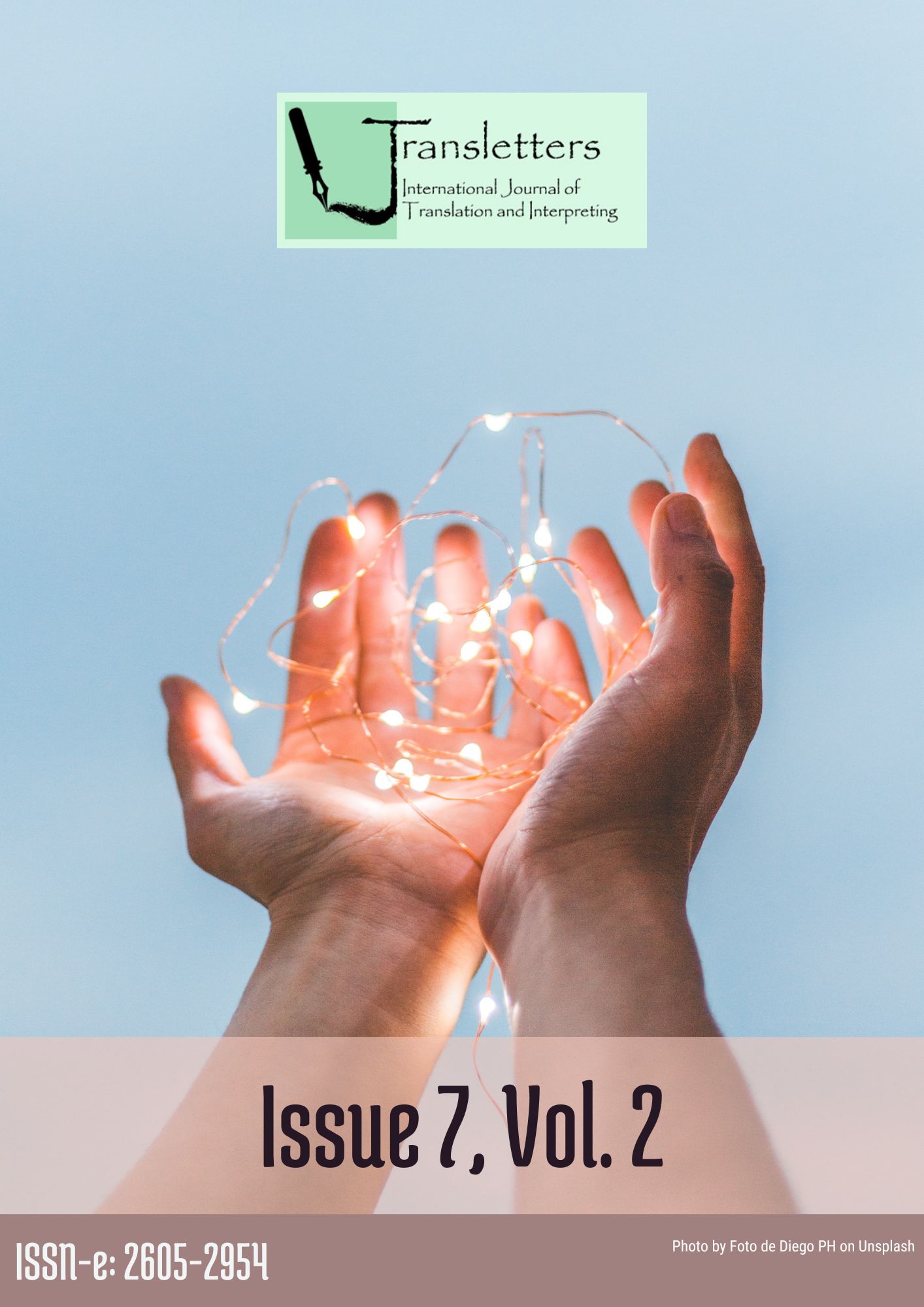Examining Teach-back in Healthcare Interpreting through Case Study Research
Main Article Content
Abstract
Clinicians engage in interactions with migrant patients that often experience low health literacy levels and linguistic barriers. Institutions are tasked to provide adequate interpreting services and ensure effective communication strategies. Among these, the teach-back (TB) method allows clinicians to check the patient’s level of understanding by asking them to repeat what they have understood after health information is delivered. Despite its relevance in mono-/bilingual consultations, studies on TB when an interpreter is present are scarce. Drawing on case-study research and conversational analysis, this paper examines a dataset of interpreted-mediated interactions involving TB and occurring in a Spanish hospital. We aim to i) isolate instances of TB, ii) detect scenarios where TB is used, iii) develop an exploratory and descriptive analysis of two illustrative cases, and iv) provide suggestions for interpreter-clinician collaborative usage of TB in migrant healthcare provision.
Downloads
Article Details

This work is licensed under a Creative Commons Attribution-NonCommercial-ShareAlike 4.0 International License.
Suggested policy for journals that offer open access
Authors who publish with this journal agree to the following terms:
1. Authors retain copyright and grant the journal the right of first publication with the work simultaneously licensed under a Creative Commons Attribution License, which allows others to share the work with an acknowledgement of authorship of the work and initial publication in this journal.
2. Authors may enter into additional contractual arrangements for non-exclusive distribution of the published version of the paper in the journal (e.g., submission to an institutional repository), with an acknowledgement of its initial publication in this journal.
3. Authors are allowed and encouraged to publish their work prior to the final version published in this journal once accepted (e.g., in institutional repositories or on their website), as it can lead to productive exchanges, as well as earlier and higher citation of the published work (see The Open Access Effect).

